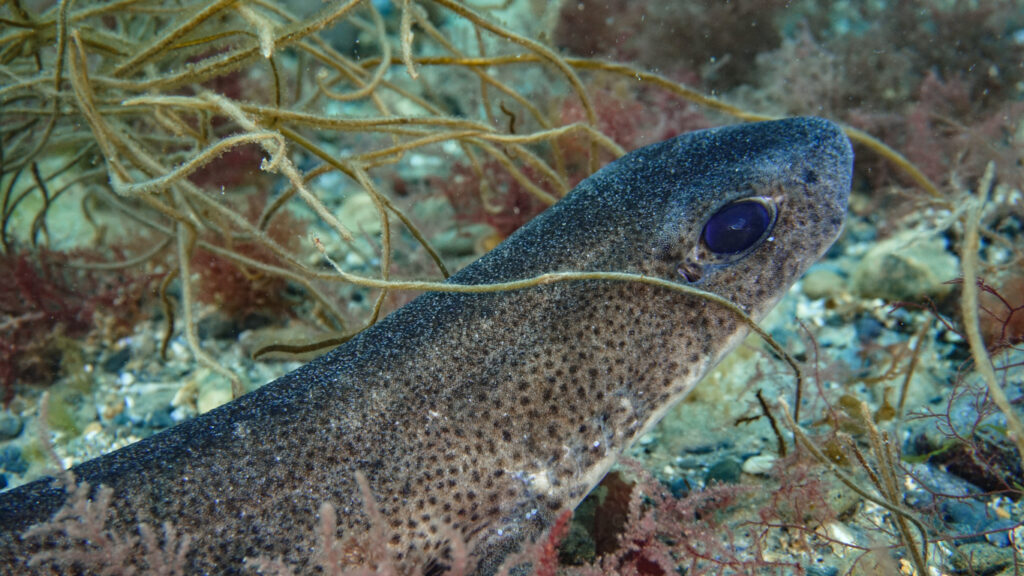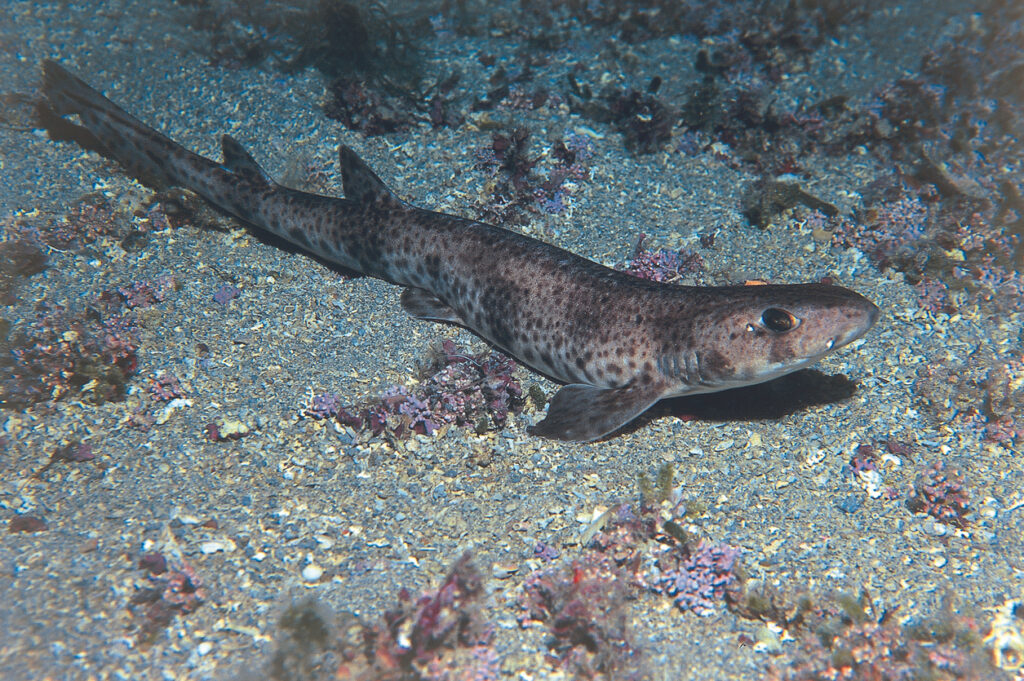The waters of the Northeast Atlantic are absolutely teeming with the Lesser Spotted Catshark, a family of shark with over 150 species – a number that makes them the largest family of sharks in the world.
And though that might sound pretty scary, don’t fret: they’re actually among the smallest and most harmless fish in the world’s oceans. Unfortunately, that makes them a bit of an easy target for predators of all kinds.
Below, we’ll learn a little more about the Lesser Spotted Catshark and take a look at those who go on the hunt for them when it’s time to feed.
What do Lesser Spotted Catsharks look like?
Small and covered in dark spots and blotches all over its skin, the Lesser Spotted Catshark – more commonly known as the dogfish – gets its name from its blunt snout and large cat-like eyes which resemble the feline friends you may very well have in your own home.
Speaking of its skin, it’s on the very rough side of things since it’s covered in hard “dermal denticles”, which literally mean “tiny skin teeth”. Because of this, the texture feels a lot like coarse sandpaper when they’re brushed the wrong way. While that’s not a very pleasant thing to thing of, it acts as a chainmail-like armour which protects it from bigger animals looking to feed on it. In fact, when they’re threatened, they can curl up into a big donut-like shape so that they appear bigger and tougher to eat!
As for catshark teeth, they have a lot of very small ones, with one big cusp with small cusplets on either side near the middle of their mouths. Its rear teeth, meanwhile, are more comb-like in shape.
And like we said earlier, they’re among the smallest sharks in the ocean. The biggest catshark size in the North Sea is 100cm, while in the Mediterranean Sea, they measure just 60cm at their biggest. By comparison, the biggest shark in the world – the whale shark – comes in at a whopping 62 feet long!

Where do Lesser Spotted Catsharks live?
Found in both temperate and tropical waters across the world, Lesser Spotted Catsharks – despite their name – are actually super common around the UK, where they live close to the seabed in shallow waters that tend to be only 100m deep. Other species of catshark can live in water that reaches 6,600 feet below the ocean’s surface.
Because of this shallow habitat, the cases of their eggs frequently wash up on English shores. These egg cases actually have a pretty cute name as well. Known as ‘mermaid’s purses’, these wonderfully-named cases measure just 5-7cm and have curly tendrils that spiral out from their corners. These let them securely grip onto seaweed and seagrass until they’re ready for hatching – a process which can take up to nine months to happen.
What do Lesser Spotted Catsharks eat?
When they’re peckish, these small carnivorous creatures go for marine invertebrates like molluscs, crustaceans, and worms, they’re also known to nibble on small bony fish such as gobies, pilchards, mullets – if they’re feeling extra hungry, however, they’ll even dine on larger fish. Young Lesser Spotted Catsharks have an unusual way of using their skin to hunt for food. Known as “scale rasping”, they use their rough skin to keep hold of their next meal, and use rapid jaw and head movements to tear away bite-sized pieces before they eat!
Since the Lesser Spotted Catshark is nocturnal, they remain asleep or motionless during the day, and go on the hunt for their prey during the night.

What other animals feed on Lesser Spotted Catsharks?
So who or what do Lesser Spotted Catsharks have to watch out for? Because of their small size, larger fish including other sharks – and even seals – have been known to make a meal of them.
And while the species poses no threat to humans, we’re not quite as kind to them. Although they’re not the most popular of animals to eat, commercial fisheries still catch them and they’ve been fished for centuries. Once they’ve been caught, they’re often sold to fishmongers as rock salmon, either fresh or dry-salted. They’re also used for oil and fish meal.
The good news is that there are lots of Lesser Spotted Catsharks, so they’re in no danger of going extinct any time soon.
Where can I see Lesser Spotted Catsharks at Blue Reef Aquarium?
Along with some other fishy friends, the Lesser Spotted Catshark can be found over at our Cornish Waters exhibit whenever you come by for a visit.
Ready to see spot the catshark for yourself? Head over to our Visitor Info page to find out everything you need to know before you say come say hi. We’re looking forward to seeing you soon!
